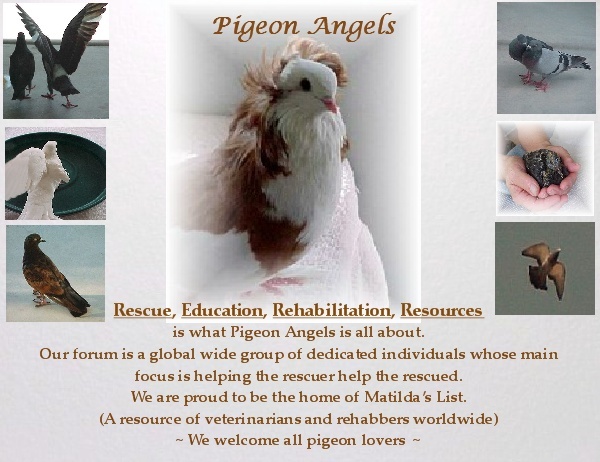Old World Aviaries
TeflonTM poisoning: The silent killer
by Darrel K. Styles, DVM
Schubot Exotic Bird Health Center
Texas A&M University
The topic of Teflon poisoning seems to come up at this time of year when the house is tightly closed for winter and circulation indoors is poor. Teflon poisoning, or more correctly polytetrafluoroethlyene (PTFE) intoxication, is a rapid and lethal gaseous intoxication of all species of birds.
PTFE toxicity can occur anytime of year, and it’s consequences are devastating. The only clinical signs of illness are birds starting to drop off their perches or displaying severe respiratory distress such as open-mouthed breathing, tail-bobbing, or even audible respiratory rales (raspy breathing sounds) followed quickly by death.
The cause of PTFE toxicity is gaseous emission of the material from nonstick cookware. The brand of cookware does not have to be Teflon. Any brand of Teflon-type non-stick cookware, such as Silverstone

, can result in intoxication. Also, cookware is not an exclusive culprit; this toxicosis has been caused by heat lamps coated with Teflon backing as well as range-burner or eye backings that are coated with the substance.
PTFE toxicity occurs because the coating is overheated. This usually is a result of forgetting that the cookware is on the stove and leaving it empty or letting the contents overheat and dry. The excessive heat causes Teflon coating to enter a gaseous state. For humans and other mammals, the PTFE gas is innocuous in the concentrations reached. However, birds are exquisitely sensitive to the gas and are quickly overcome by the vapor.
Some cases of mammalian, including human, intoxications occurred back in the early days of the products, but better chemical bonding processes reduced gaseous emissions. However, this did not eliminate all emissions when the substance overheats. And, the chances of gaseous emission increase as the cookware ages or undergoes repeated use or is continuously overheated.
The gas travels rapidly and birds begin to die or become ill in order of their proximity to the gas source. It is as if a bomb exploded and those closest to the blast receive the brunt of the injury; this is the pattern that PTFE displays. Again, the signs observed are acute death or respiratory distress which may be quickly followed by death. Again, all types of birds are affected, from finches and canaries to macaws and Amazons. The smaller the bird, the less gas required to manifest the effect, so small birds are at greatest risk. If the bird is exposed and manages to survive, then medical attention will be required to ensure the bird’s continued survival. (If you should have any respiratory signs after being exposed to PTFE gas, call your physician immediately.)
If you suspect an intoxication is in progress, you can take steps to minimize the damage. First, turn off the heat, take the cookware outside, and place it on a nonflammable surface, such as concrete, and away from children and pets. This will remove the source of gas. Next, open windows to dilute the gas and increase ventilation. If you have exhaust fans or an attic fan, turn them on. Then, take birds that are not displaying signs far from the source or outdoors if possible. (It is usually too late for those birds that are gasping, so your triage is to ensure the living are not injured.) Finally, attend to those birds in respiratory distress by taking them to your avian veterinarian as quickly as possible.
The pathology that PTFE gas causes is severe edematous pneumonia. This means that the bird’s lungs fill with body fluid, because the blood capillaries in the lungs leak blood fluids into the lung airways. Essentially, the bird drowns in its own body fluid.
If the bird is showing respiratory distress, get to a veterinarian immediately. The only medical recourse your vet may have is to place the bird in an oxygen cage, administer antibiotics and mild diuretics to relieve the amount of fluid in the lungs, and hope for the best. Some birds survive but many do not.
The best course is prevention. To avoid this catastrophe, be careful of your Teflon-coated surfaces. Some vets and aviculturists advocate eliminating the cookware from the home. I think this is a bit extreme, but I advise using some common sense and taking precautions.
First, I recommend not keeping birds in the kitchen for several reasons. Not only are they subject to PTFE toxicity, but I have seen some severely burned birds who were much too curious around mealtime and investigated the fried chicken too closely while it was still in the pan. Second, watch your Teflon; don’t leave the cookware unattended. As long as the material is not overheated, it is generally safe to use. When the cookware begins to age or is damaged, dispose of it. We all have those pans in which the non-stick surface now sticks. Just get rid of it. (Besides, it’s a pain to have to scrub those pans, which just damages the surface more.) Do not use Teflon-coated heat lamps for any reason; it just isn’t worth the risk. These lamps generally will state that they are coated with Teflon on the label. They cannot be relied upon to maintain a nongaseous state.
Finally, if you suspect a pan has overheated, but your birds show no immediate signs, remove them from the area and monitor them over the next 4 hours. If no signs appear, then you can feel relatively comfortable about averting disaster, and a vet may not be necessary.
(Please click here to read about my personal experience)https://pij-n-angels.forumotion.net/discussion-of-pigeon-predators-f24/personal-experience-with-teflon-t103.htm

